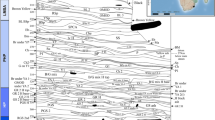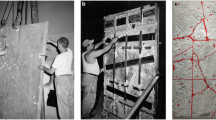Abstract
THE Babylonian statues recently acquired for the Louvre by the mission of M. de Sarzec are of great interest in the history of measurement. The earliest datable measuring rods hitherto known are two Egyptian masons' cubits of wood, of the reign of Hor-em-heb in the fifteenth century B.C.; but on these statues we find represented not merely a mason's rod, but a finely-divided plotting scale, and the date of these figures is placed before the fifteenth century B.C. Of course the accurate lengths of cubits can easily be recovered from the dimensions of buildings of the earliest periods; but no measures, or accurate representations of such, are preserved to us from the primitive times.
This is a preview of subscription content, access via your institution
Access options
Subscribe to this journal
Receive 51 print issues and online access
$199.00 per year
only $3.90 per issue
Buy this article
- Purchase on SpringerLink
- Instant access to full article PDF
Prices may be subject to local taxes which are calculated during checkout
Similar content being viewed by others
Author information
Authors and Affiliations
Rights and permissions
About this article
Cite this article
PETRIE, W. The Earliest Known Plotting Scale. Nature 28, 341 (1883). https://doi.org/10.1038/028341a0
Issue date:
DOI: https://doi.org/10.1038/028341a0



